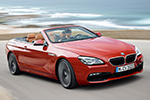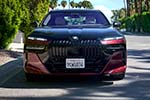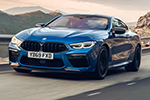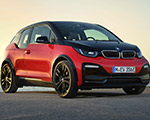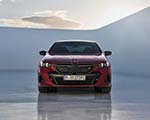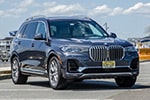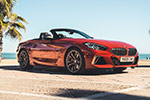The diesel era is nearly done. In Europe, diesel engines once reigned supreme—over 50% of new car sales in some countries. But times change. Today, plug-in hybrids (PHEVs) are catching up fast. In Q1 2025, PHEVs made up 7.9% of vehicle sales across the EU, EFTA, and UK—barely trailing diesel’s 8.2%. And that’s just one region. Around the world, PHEVs are making a comeback, offering drivers the best of both worlds: smooth electric power for daily errands, and gasoline backup when the road trip calls.
So here’s the real question: Why hasn’t BMW brought the new X3 30e Plug-In Hybrid to the U.S. yet?
This Is the Right Powertrain, Right Now
The new BMW X3 30e ditches the old “xDrive30e” badge for a cleaner name, but the more important change is under the skin. BMW has significantly upgraded the hardware. With a total of 295 horsepower and 332 lb-ft of torque, the new setup combines a punchy turbocharged 2.0-liter four-cylinder with a powerful electric motor tucked into the 8-speed auto.
It’s smooth, quick, and refined. The 0–62 mph sprint happens in 6.2 seconds—not blistering, but more than enough for everyday confidence. And it’ll now cruise in full-electric mode all the way to 87 mph, making freeway commutes whisper-quiet and gas-free.
But the real headline is the range. Thanks to a 19.7-kWh battery—nearly double the size of the last model—the X3 30e can now drive up to 56 miles (90 km) WLTP on electric power alone. That’s a massive step up from the old 26–31 mile range and brings it into serious EV territory for daily drivers.
Charging’s quick, too. At 11 kW, a full recharge takes just over two hours—about the same time as a long lunch or a gym session.
Why PHEVs Are Hot Again
Plug-in hybrids are having a moment, and it’s not just hype. More and more buyers—especially in the U.S.—are realizing that they offer the perfect blend of tech, convenience, and peace of mind. You get electric driving during the week, and gasoline flexibility on the weekends. No range anxiety. No compromises. No need to juggle two cars—one EV and one gas. This is two-in-one practicality, and it makes total sense for families, commuters, and even long-distance road trippers.
And here’s another key point: PHEVs are holding their value better than EVs right now. We’ve seen it across used car listings in the U.S.—electric vehicles can depreciate quickly, especially as tech evolves fast and tax credits shift. PHEVs, on the other hand, seem to be riding a smoother depreciation curve. That makes them a smarter buy in the long run.
So… Why Isn’t It Here?
In 2024, we spoke directly with Dr. Nicolai Martin, BMW Board Member responsible for Purchasing and Supplier Network. We asked why BMW hadn’t launched the new X3 30e in the U.S. yet. His answer? It’s not a technical issue. The car meets all regulatory requirements for North America.
At the time, BMW was still watching and waiting. According to Martin, there was an “official investigation” underway inside BMW to determine if demand will justify bringing it here. Translation: they were trying to make sure the numbers add up.
But honestly, the numbers already do. Americans love the X3. It’s one of BMW’s top sellers. Plug-in hybrid demand is climbing. And competitors like Volvo, Lexus, and Mercedes are already selling PHEVs in this exact segment. So again—why not BMW?
If It Comes, It Won’t Be Before 2027
We’re hearing a rumor that BMW might wait until the X3’s facelift in 2027 to finally pull the trigger. But that feels late. Plug-in hybrid adoption is accelerating now. Consumers want real choice now. BMW could own this space—if they move soon.
This isn’t about niche appeal. It’s about giving U.S. buyers the right tool for the moment. With rising EV infrastructure, tightening emissions standards, and growing public interest in electrified vehicles, the X3 30e fits the bill.
It has the badge. It has the powertrain. It has the range and recharge speed. And it hits that Goldilocks zone between full-electric ambition and real-world practicality.
BMW, You’re Sitting on a Winner
The new 2025 BMW X3 30e Plug-In Hybrid is ready. The U.S. market is ready. This isn’t just a niche model—it’s a no-brainer. For buyers who want luxury, flexibility, and electrification without compromise, this is exactly the SUV they’ve been waiting for.
Seriously—how is this not already in showrooms?









































